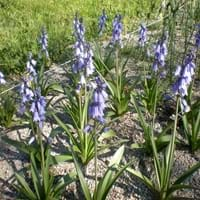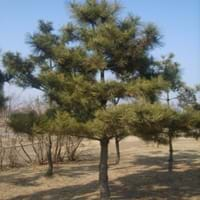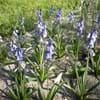Life Span
Perennial
Perennial
Type
Bulb or Corm or Tuber
Needled or Scaled Evergreen
Origin
Southern Europe, Western Europe, Northern Africa
Eastern Asia, Japan, Korea
Types
Hyacinthoides flahaultiana, Hyacinthoides mauritanica, Hyacinthoides reverchonii
Not Available
Habitat
Parks, wastelands, Waysides, Woodland edges
sand dunes, Sandhills, Sandy areas
USDA Hardiness Zone
4-10
5-8
Sunset Zone
21,22
3a, 3b, 4, 5, 6, 7, 8, 9, 10, 11, 12, 14, 15, 16, 17, 18, 19, 20, 21
Habit
Clump-Forming
Pyramidal
Flower Color
White, Blue, Pink, Blue Violet
Non Flowering Plant
Flower Color Modifier
Bicolor
Bicolor
Fruit Color
Not Available
Brown
Leaf Color in Spring
Green
Dark Green
Leaf Color in Summer
Light Green
Dark Green
Leaf Color in Fall
Several shades of Green
Dark Green
Leaf Color in Winter
Light Green
Dark Green
Leaf Shape
Narrow
Subulate
Plant Season
Spring
Spring, Summer, Fall, Winter
Sunlight
Partial Sun, Partial shade
Full Sun
Growth Rate
Medium
Medium
Type of Soil
Loam
Loam, Sand
The pH of Soil
Acidic, Neutral
Acidic, Neutral
Soil Drainage
Well drained
Average
Bloom Time
Spring, Late Spring
Fall, Summer, Winter
Tolerances
Drought
Drought
Where to Plant?
Ground
Ground
How to Plant?
By dividing rhizomes, tubers, From bulbs, Seedlings
Seedlings, Softwood cuttings, Stem Cutting, stem tip cuttings
Plant Maintenance
Medium
Medium
Watering Requirements
Average Water Needs, Do Not over Water, Requires regular watering
Do not water excessively, Do not water frequently, Needs less watering
In Summer
Lots of watering
Lots of watering
In Spring
Moderate
Moderate
In Winter
Average Water
Average Water
Soil pH
Acidic, Neutral
Acidic, Neutral
Soil Type
Loam
Loam, Sand
Soil Drainage Capacity
Well drained
Average
Sun Exposure
Partial Sun, Partial shade
Full Sun
Pruning
Pinch Tips, Remove damaged leaves, Remove dead branches, Remove dead leaves, Remove dead or diseased plant parts
Remove damaged leaves, Remove dead branches, Remove dead leaves
Fertilizers
High amounts of nutrients, organic fertlizers
All-Purpose Liquid Fertilizer
Pests and Diseases
Red blotch
Red blotch
Plant Tolerance
Drought
Drought
Flower Petal Number
Single
Single
Foliage Texture
Medium
Medium
Foliage Sheen
Glossy
Not Available
Attracts
Birds, Butterflies, pollinators
Beetles, Nematodes, Sawfly, Scale Insects
Allergy
Pollen
Not Available
Aesthetic Uses
Showy Purposes
Bonsai, Not Used For Aesthetic Purpose
Beauty Benefits
Not Available
Not Available
Environmental Uses
Air purification
Air purification
Medicinal Uses
Not Available
Antirheumatic
Part of Plant Used
Flowers
Bark
Other Uses
Beneficial species for attracting pollinators, Decoration Purposes, Showy Purposes, Used for Landscaping
Herbicide, Used as a dye
Used As Indoor Plant
No
No
Used As Outdoor Plant
Yes
Yes
Garden Design
Container, Cutflower, Mixed Border, Rock Garden / Wall, Wildflower
Feature Plant, Screening, Wind Break, Shade Trees, Topiary, Bonsai, Espalier
Botanical Name
HYACINTHOIDES hispanica
PINUS thunbergii
Common Name
Spanish Bluebell
Japanese Black Pine
Black Pine
In Hindi
Bluebell plant
Japanese Black Pine
In German
Endymion Pflanze
Japanese Black Pine
In French
plante Bluebell
Japonais pin noir
In Spanish
planta Bluebell
Pino Negro Japonés
In Greek
φυτό Bluebell
Ιαπωνικά Μαύρη Πεύκη
In Portuguese
planta Bluebell
Japonês Black Pine
In Polish
Bluebell roślin
Japoński sosna czarna
In Latin
Bluebell herba
White Pine Italica
Phylum
Magnoliophyta
Tracheophyta
Class
Liliopsida
Pinopsida
Family
Liliaceae
Pinaceae
Genus
Hyacinthoides
Pinus
Clade
Angiosperms, Monocots
Not Available
Tribe
Hyacintheae
Not Available
Subfamily
Scilloideae
Not Available
Season and Care of Bluebell and Japanese Black Pine
Season and care of Bluebell and Japanese Black Pine is important to know. While considering everything about Bluebell and Japanese Black Pine Care, growing season is an essential factor. Bluebell season is Spring and Japanese Black Pine season is Spring. The type of soil for Bluebell is Loam and for Japanese Black Pine is Loam, Sand while the PH of soil for Bluebell is Acidic, Neutral and for Japanese Black Pine is Acidic, Neutral.
Bluebell and Japanese Black Pine Physical Information
Bluebell and Japanese Black Pine physical information is very important for comparison. Bluebell height is 30.00 cm and width 15.00 cm whereas Japanese Black Pine height is 610.00 cm and width 610.00 cm. The color specification of Bluebell and Japanese Black Pine are as follows:
Bluebell flower color: White, Blue, Pink and Blue Violet
Bluebell leaf color: Green
Japanese Black Pine flower color: Non Flowering Plant
- Japanese Black Pine leaf color: Dark Green
Care of Bluebell and Japanese Black Pine
Care of Bluebell and Japanese Black Pine include pruning, fertilizers, watering etc. Bluebell pruning is done Pinch Tips, Remove damaged leaves, Remove dead branches, Remove dead leaves and Remove dead or diseased plant parts and Japanese Black Pine pruning is done Remove damaged leaves, Remove dead branches and Remove dead leaves. In summer Bluebell needs Lots of watering and in winter, it needs Average Water. Whereas, in summer Japanese Black Pine needs Lots of watering and in winter, it needs Average Water.





